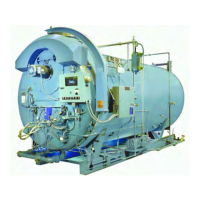Chapter 8 — Inspection and Maintenance
Part No. 750-184 8-27
V. LUBRICATION
Electric Motors
Manufacturers of electric motors vary in their specifications for lubrication
and care of motor bearings; their specific recommendations should be
followed.
Ball-bearing-equipped motors are pre-lubricated. The length of time a
bearing can run without having grease added will depend upon many
factors, including the rating of the motor, type of motor enclosure, duty,
atmospheric conditions, humidity, and ambient temperatures.
Complete renewal of grease, when necessary, can be accomplished by
forcing out the old grease with the new grease. Thoroughly wipe those
portions of the housing around the filler and drain plugs (above and below
bearings). Remove the drain plug (bottom) and free the drain hole of any
hardened grease which may have accumulated. With the motor not running,
add new grease through the filler hole until clear grease starts to come out
of the drain hole. Before replacing the drain plug, run the motor for 10 to 20
minutes to expel any excess grease. The filler and drain plugs should be
thoroughly cleaned before they are replaced.
The lubricant used should be clean and equal to one of the good commercial
grades of grease locally available.
Control Linkage
Apply a non-gumming, dripless, high temperature lubricant, such as
graphite or a silicone derivative to all pivot points and moving parts. Work
lubricant in well and wipe excess. Repeat application at required intervals
to maintain freedom of motion of parts.
Solenoid and Motorized Valves
Solenoid valves and motorized valves require no lubrication.
IFGR Lubrication (CB-LE)
Motors should be lightly lubricated at startup, using the grease specified
below or equivalent. Lubricate the motor as follows:
Disconnect and lock out electrical power to the boiler before
lubricating the fan motor. Failure to follow these
instructions can cause injury or death.
1. Disconnect and lock out electrical power to the boiler.
2. Wipe clean all grease fittings (fill and drain fittings).
3. Remove the fill and drain plugs from the motor end cap.
4. Free the drain hole of any hard grease. (Use a piece of wire, if necessary.)
5. Add grease using a low-pressure grease gun.

